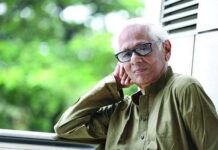Sadeq Khan
Money market analyst Rachel Middleton, writing in the International Business Times, U.K., published online January 18, 2016, noted: “Global development finance as we know it may soon change with the launch of the Asian Infrastructure Investment Bank…… Despite the strong opposition of the US, some of its allies, including the UK, Australia, Germany, Italy, the Philippines and South Korea, are backing the setting up of the new bank.
The AIIB however said that it will still keep its doors open to other countries, including the US and Japan. So far 34 founding countries hold over 74% of shares in the bank and have ratified the AIIB agreement. The remaining countries, who have agreed to be founding members, have until the end of the year to complement the membership process.”
AIIB launched
The Japan Times reported: “Chinese President Xi Jinping on 16 January, 2016, inaugurated the Asian Infrastructure Investment Bank, saying China will take more international responsibility with the birth of the new lender: This is a historic moment. China wants to improve the investment environment and integration in Asia through the 57-member AIIB.
“To begin with, the investment bank has an authorized capital stock of $100 billion. China is its largest shareholder, with a stake of about 30 percent, followed by India, Russia, Germany and South Korea, none of which has a share of more than 10 percent.
“At the ceremony, attended by about 450 people, including ministers and senior officials of the founding members, Xi said China will invest an additional $50 million in the AIIB as a special fund.
“Jin Liqun, a former Chinese deputy finance minister, was elected as the first head of the Beijing-headquartered organization. Jin has said the AIIB expects to bring its first investment project for approval around this summer and expressed hope of co-financing and working closely with other multilateral development banks.”
Bangladesh is one of the founding members of AIIB. The Finance Minister of Bangladesh, A.M.A. Muhith attended the inaugural ceremony, and also AIIB’s Board of Governors meeting as the finance minister of a member state, newspapers in Dhaka reported quoting Muhith.
In September 2014, Bangladesh decided to join AIIB after which, State Minister for Finance MA Mannan went to China to sign the MoU on Oct 24, 2014.
As AIIB President-designate, Jin Liqun had met Prime Minister Sheikh Hasina during his Bangladesh visit in November, 2015 and had said that the bank’s first investment will be in Bangladesh.
Can’t become a debtor country
Ahead of his trip to Beijing for AIIB Board of Governors meeting, Finance Minister Muhith told the media on January 13: “We want AIIB that is piloted by China which is the world’s second largest economy. Bangladesh is now a role model for the developing world. We have posted 6 percent GDP growth over the past few years despite a global recession. We have attracted global attention. We are doing the Padma bridge with our own resources. But we need many such projects to boost our infrastructure. For that, we need AIIB funding, we want it to come to our help as does World Bank and Asian Development Bank. We want AIIB funding big time.”
On his return, the Finance Minister in his press briefing said: “You can’t become a debtor country by taking loans a lot. Bangladesh has a wonderful record of public-debt servicing. We’ve made the record in 45 years. You can’t destroy it. From now on Bangladesh would get soft loans from China, whose rate of interest will be below 2.0 per cent with 12 to 30 years of grace period for repayment.
“You cannot take loans just only for the reason that there is plenty of money in China. You have to take loans for nationally-prioritised projects only.”
Muhith went on to say he was thinking about writing a letter to his cabinet colleagues to be cautious in taking Chinese loans beyond the nationally-prioritised projects: “Projects of your ministry have the highest priority to you, but that may not have been listed as a national priority.” The Finance Minister presumably had in mind a business circle gossip that Commerce Minister Tofail Ahmed had negotiated a Chinese loan, for which the Chinese Commerce Minister had come to Bangladesh for signing, but went back empty handed as the Finance Minister blocked it. Muhith also said: “Bangladesh attended the inaugural ceremony of the bank as an intending member and observer,” since formalities are yet to be completed.
Ten priority projects
“Bangladesh signed a memorandum of understanding in the past. An act is ready for passage in the parliament. In three to four months the AIIB will start approving projects, and there will be at least one project (establishing power-transmission line) on the first list of the approved ones.”
The picture given to the press before Muhith’s China visit and the picture now being given appears confusing, to say the least. Meanwhile, whatever may be the statistical cheer and lower-middle income group status we enjoy, for sustainable development goals set by the United Nations or beyond, we still have to put our acts together.
2016 is predicted to be a very difficult year. The IMF has thrice revised its estimate of global growth downwards for the year, and the oil glut has brought about a crash in crude prices and also in the major capital markets of Asia and Europe. Bangladesh economy is showing signs of stagnation both in manufacturing and in service sectors. Domestic and foreign investment figures are low, so are national savings. If the existing commerce and industry operations are having a smooth sail, that is no comfort for the new generation annually entering the labour and employment market.
The Finance Minister is perhaps right when he says for Bangladesh 10 infrastructure projects are priority, for which $10 billion is required. But we cannot get that sort of money by bravado alone. We have to satisfy lenders by our performance.
How are we handling our current projects? Implementation rate of the government’s fast-track projects remain far behind their respective targets. Three of the eight mega-projects are progressing, five others sadly lagging behind the targets for delay in different stages of implementation. Let us look at the overall picture.
The government had taken up these eight gigantic projects under fast-track programme. They are monitored by a committee, led by Prime Minister Sheikh Hasina.
Progress of priority projects
Of them, there is the deep-seaport project, for which the government is yet to finalise its decision as to whether or not it would be set up at Sonadia. Instead of Sonadia, the government is now considering Pyra in Patuakhali and Matarbari in Cox’s Bazar for setting up the deep-seaport. More than three years ago, some private sector and government-owned companies from Denmark, the UAE, China, India and Germany showed their interest and submitted proposals for developing Sonadia as a deep-seaport for Bangladesh. But the government is going slow with the deep-seaport project. Global politics and Bangladesh’s present geopolitical situation is the reason for go-slow, some officials reportedly said.
The Liquefied Natural Gas (LNG) terminal-installation project at Maheshkhali is also caught on a slow track although the government decided to set it up five years back. In 2010, Petrobangla issued pre-qualification tender for terminal development to find suitable investors. The organisation in August 2015 signed term-sheet with Singapore-based Excelerate Energy Limited Partnership for the LNG terminal-use agreement. The company was to set up the country’s first floating storage and re-gasification unit (FSRU), popularly known as LNG terminal, on an offshore island in the Bay of Bengal. According to the agreement, the state-run petroleum corporation would pay $0.474 per mmbtu for FSRU, on a build-own-operate-transfer (BOOT) basis, for 15 years. Petrobangla would receive LNG within the range between 500 mmcfd and 600 mmcfd. It is difficult to understand why it is now in a limbo.
More than three years back the government had taken up the much-talked-about 1,320MW coal-fired power plant at Rampal. Bangladesh signed a deal with India for the joint-venture (JV) power project in January 2012. The state-run power companies of the two countries formed the JV to implement the project. There is local opposition to the project on environmental grounds.
Power, nuke, bridge, metro projects
The progress is also very slow. Power Division developed the land for the project site, and is now constructing the connecting road for the proposed power plant. The joint venture company recently floated pre-qualification tender for the international contractors for setting up the power station. Local people doubt that it will at all be implemented.
The government, also nearly three years back, decided to set up the Pyra seaport in Patuakhali. But the port’s development work is going on at a snail’s pace. The suitability of the site is also in question.
Bangladesh’s largest Tk 359.84 billion cost 1,200-MW Matarbari coal-based power project is also going on slowly though it was taken up in 2014. The government has acquired land for the power station. But construction work of the main power plant and other related works are still far off the mark, as the government is yet to select contractors.
For the Rooppur nuclear power station, Bangladesh Atomic Energy Commission (BAEC) on December 25, 2015 signed a US$12.65 billion deal with the Russian state-owned company, Atomstroy Export, for setting up the 2,400-MW nuclear power facility at Rooppur in Pabna. The government undertook the power generation project in 2009, after dilemmas for decades over nuclear power option.
Another big-venture undertaking is the Tk 219.85-billion Uttara-Motijheel metro-rail, initiated in 2012. Japan-based company is working to conduct detailed study and prepare design of the first mass-rapid-transport gateway in the country. Till last year, some 48 per cent of the detailed design work has been completed. After designing, government would float international tender for its construction work. So we are far from ready.
While the project work of the Tk 287.93 billion Padma Multipurpose Bridge is progressing, some 16 per cent of the main bridge construction work having been already been completed by November 2015, in financing the project from our own resources, we are probably putting too many egg in one basket. Our roads, highways and bridges infrastructure are falling into disrepair for lack of timely availability of funds. Going it alone and committing available resources for infrastructure development to a prize project, albeit of signal economic benefit, at the cost of overall maintenance of country infrastructure may have adverse microeconomic effects both short-term and long-term. There has to be a balance in resource mobilisation and resource allocation, both domestic and foreign, for sustainable development.
Source: Weekly Holiday









